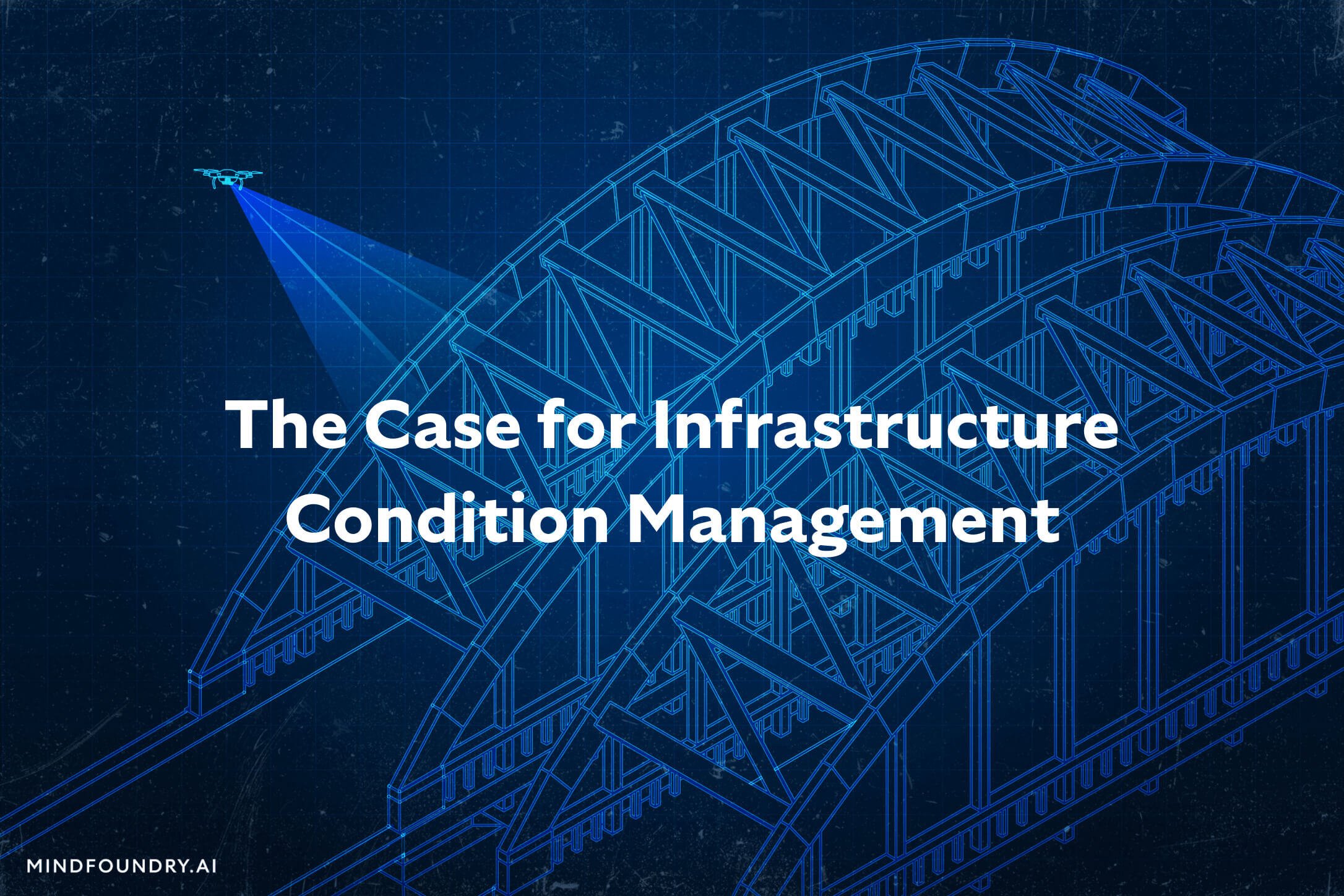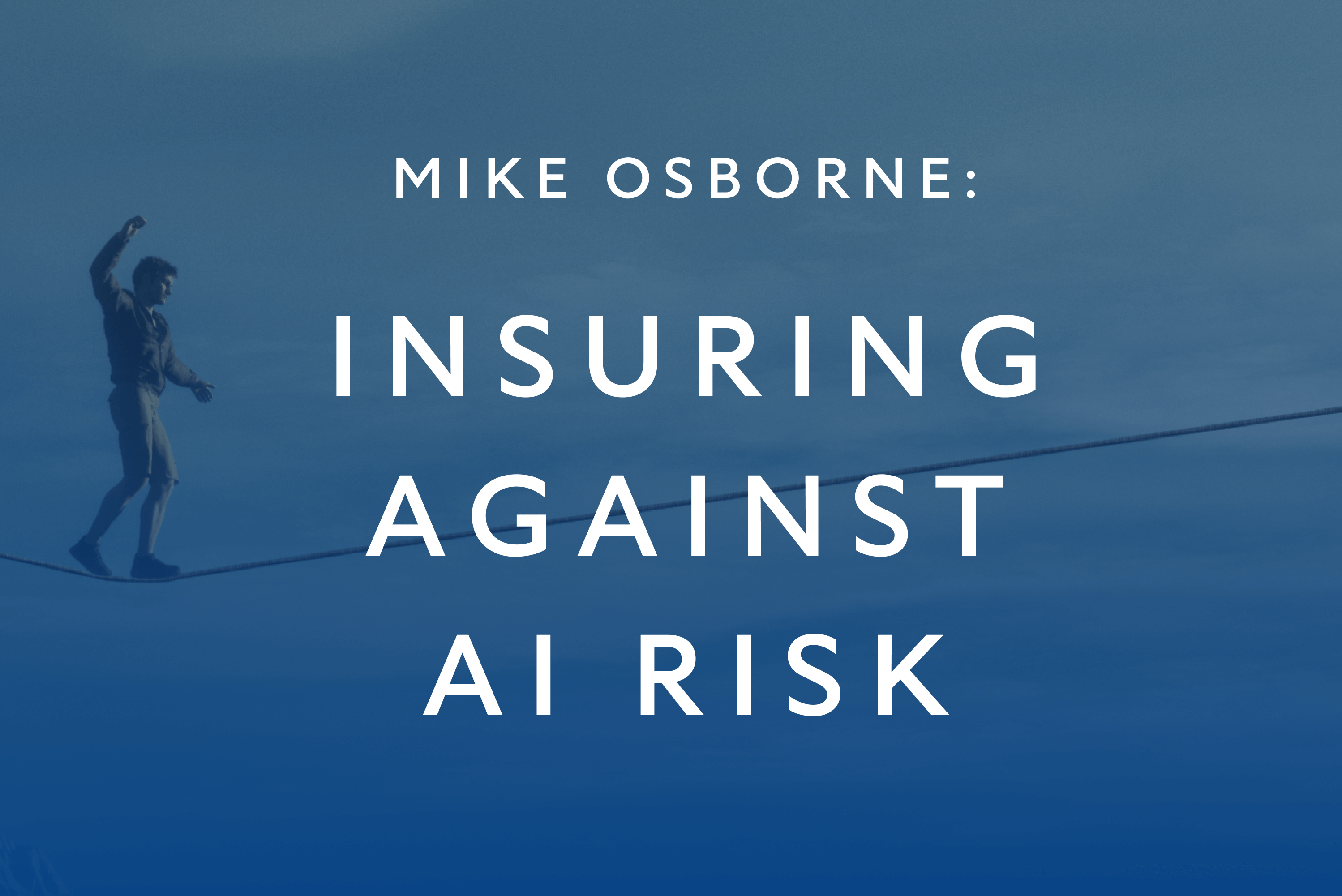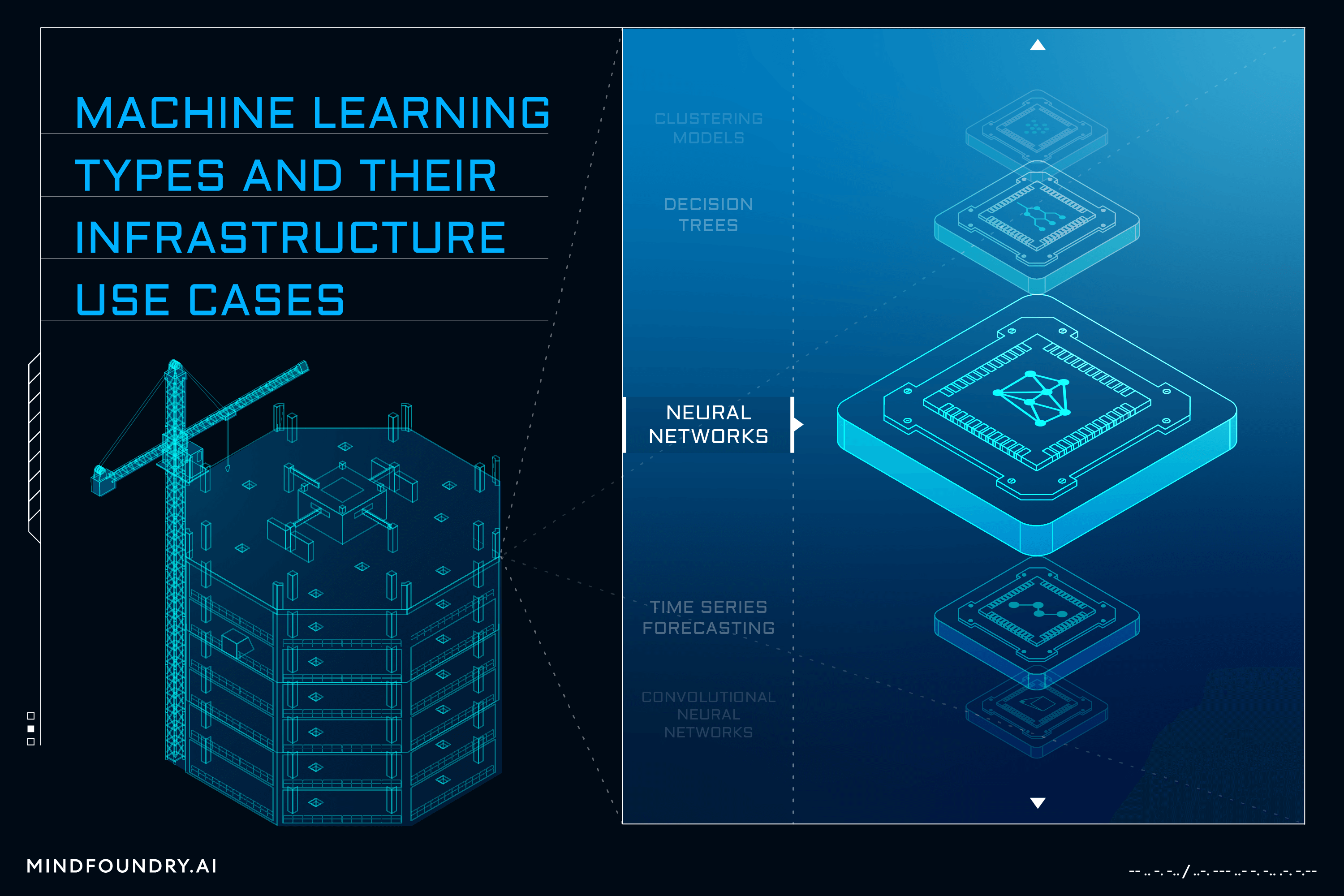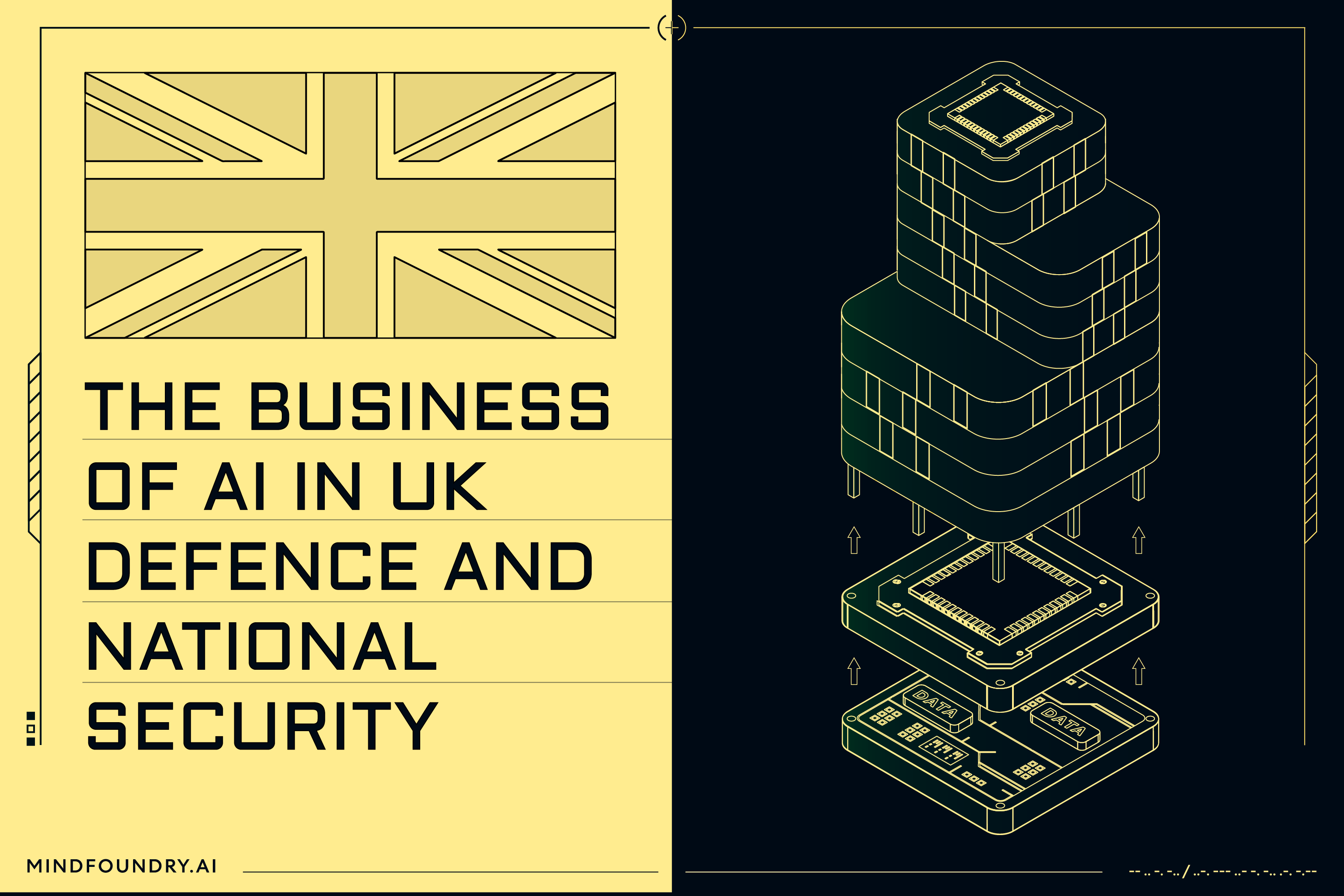Insuring Against AI Risk: An interview with Mike Osborne
When used by malicious actors or without considerations for transparency and responsibility, AI poses significant risks. Mind Foundry is working with...

The condition of many of our built assets is approaching a crisis point as they age. Reversing this trend starts with a comprehensive understanding of the condition of our infrastructure, which in the UK includes 73,208 bridges, 245,700 miles of road, and vast numbers of other structures. Gaining this understanding using only traditional inspection methods, though, is time-consuming and inefficient and also won’t deliver the necessary insight in time to take remedial action.
Instead, we need scalable methodologies and technology that complement our existing capabilities and provide the required knowledge to take targeted action and maintain our built assets to last as long as we need them to.
The Flaws with Current Inspection Methodologies
At present, asset owners spend millions of pounds every year on inspections. For example, a bridge typically receives a routine visual inspection every two years to check for obvious faults, along with a detailed inspection every six years to get a more comprehensive understanding of its condition. The issue with this process is that the resulting data that then surfaces in asset management systems isn't suitable for making long-term decisions about maintenance or portfolio-level forecasts of funding needs. As time has passed, this situation has steadily worsened to the point where we are faced with a growing landscape of failing assets and a crisis on the horizon, as shown by recent incidents like the partial collapse of the Carola Bridge in Dresden, Germany.
Before an inspection, managers have to navigate potential accessibility issues that might make it problematic to inspect an asset safely. If it’s not possible to get close enough to a structure to inspect it properly, then this makes it even harder to fully understand its condition and plan accordingly. Authorities in charge of managing civil infrastructure may be responsible for hundreds or even thousands of these structures, and there are only so many individuals available to inspect these structures.
The limitations of the human ability to visually identify issues, coupled with the significant cognitive burden resulting from inspecting such a vast number of structures, mean that some defects will inevitably go unnoticed. Human nature also introduces an element of subjectivity to inspections, which means the resulting condition of intelligence can be inconsistent across the full range of assets. Condition management necessitates data that is accurate and consistent at both individual and portfolio levels to enable strategic planning and optimised maintenance.
Another problem with using inspections as the principal method for gathering condition data is that when you are only inspecting assets every 2 years, this leaves a long time for an issue that requires urgent attention to arise and goes unnoticed either until the next inspection or worse when the structure fails. The inspections themselves also have inherent limitations, as, despite the availability of apps for mobile and tablets, inspectors still rely on handwritten notes to capture defects and observations. These notes will then typically be typed up by the inspector, which could be weeks later before being added to a relatively crude database for an asset manager to interpret and decide what to do.
Frequently, inspectors use a condition index or a simple condition score of 1-5 for a structure or defect. This level of simplicity makes it impossible to capture any nuance or context, and what one inspector considers to be a level 3 defect might not be the case for another. Removing this subjectivity and adding room for a more nuanced understanding are critical steps to proper condition management.
The Role of Technology
These challenges and the limitations of current methods mean that too much time and resources are spent on inspections that are often unnecessary and that don’t capture sufficient high-quality data to enable timely and effective action. We must explore alternative approaches to infrastructure monitoring that leverage the latest technological advancements and enable fully data-driven condition management.
Technology is already proving its worth in this regard. For example, drones are now being used to capture images of large structures like major bridges that previously had been impossible to access. Techniques like computer vision can then be used to process this image data and enable asset managers to gain a complete understanding of a structure's condition. This removes some inconsistency and subjectivity associated with human-only inspections, allowing for a more complete and nuanced understanding of a structure’s condition.
However, the cost of the hardware, the extensive customisation needed, and the sheer number of structures that require attention mean drone usage isn’t a realistic, scalable solution for an entire portfolio of assets. Drones are also susceptible to vehicle-induced turbulence that affects their control and the quality of the data they capture, and National Highways often impose a distance restriction on their use to prevent them from distracting drivers.
Finally, conducting inspections with drones means you still only understand asset conditions at the point of capture, whereas what we need is to have a portfolio-level understanding that allows managers to decide on actions at any given moment and also to plan ahead in accordance with resource constraints, human and budget. The way to achieve this is to rethink condition management and implement techniques and processes that remove the risk of unnecessary inspections and allow managers to take action only when and where it is needed.
The Future is Automated Condition Monitoring
One such methodology being explored is the collection of telemetry data using sensors placed on structures. These sensors can be placed on newly constructed large, iconic structures, such as the Queensferry Crossing bridge, to monitor their condition. Alternatively, if defects are identified on a structure, these sensors, even as simple as a telltale crack monitor, can be placed on the defect to give asset managers timely information on how the defect develops. This sensor data can be used to train AI models that forecast how a defect will progress in the future and at what point it might require intervention, enabling managers to plan effectively.
Adapting technology used for separate but similar processes is another opportunity worth exploring. For example, road surfaces are often monitored using cameras and sensors mounted on cars as they drive to detect where the road surface may be compromised. This same technology could be adjusted to monitor vehicle restraint systems or bridges going over roads. The challenge would then be to analyse the many hours of footage to find points of interest without becoming disorientated by changing frames and camera angles, but this is exactly the kind of task that AI is perfectly suited to assist with.
It is also worth exploring whether satellites and geospatial imaging offer the chance to monitor infrastructure on a more continuous basis. This would no doubt require significant planning and collaboration, but with the pressing nature of the problem and the benefits offered by effective infrastructure management, these possibilities are worth investigating. If we can adapt more of these existing processes to a greater range of structure types, we will elevate our understanding of overall infrastructure conditions to the necessary levels for AI to have a significant and lasting positive impact.
This is not to say that AI and technology should replace human inspectors and their work; far from it. These individuals have invaluable expertise and contextual understanding that should be combined with AI-enabled data processing, not replaced by it. At present, however, it can be argued that too much time and money is wasted on unnecessary inspections that don’t progress our understanding, whilst actual problems and defects go undetected to the point where they require expensive, disruptive, and time-consuming intervention and repairs.
AI has given us a unique opportunity to revolutionise how we manage infrastructure, from the way we inspect structures to how we predict deterioration and plan maintenance. But for this to happen, we need to address the lack of quality data at our disposal and to fully comprehend the scale of the job at hand. This will require collaboration across domains, from AI providers and civil engineers to asset managers and local and national authorities. No one will have all the answers or resources, but together, we can devise strategies and build and use solutions to keep our infrastructure in operation safely and sustainably for as long as possible.
Enjoyed this blog? Check out our piece on Addressing the Infrastructure Condition Crisis.

When used by malicious actors or without considerations for transparency and responsibility, AI poses significant risks. Mind Foundry is working with...

AI and Machine learning is a complex field with numerous models and varied techniques. Understanding these different types and the problems that each...

While the technical aspects of an AI system are important in Defence and National Security, understanding and addressing AI business considerations...